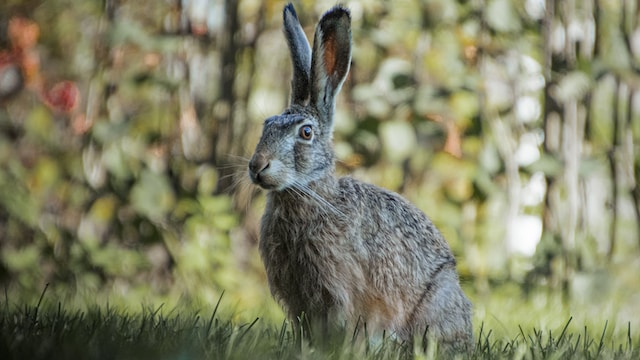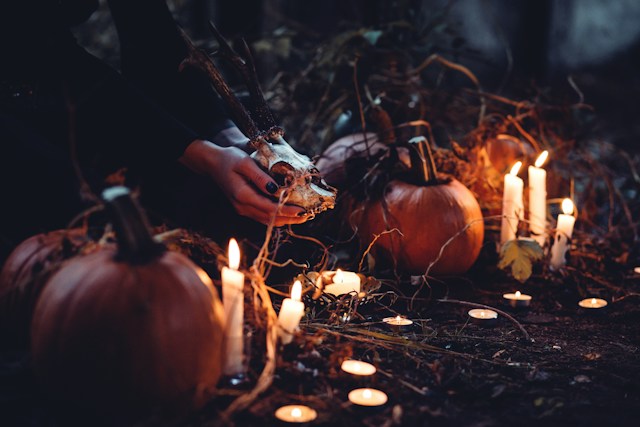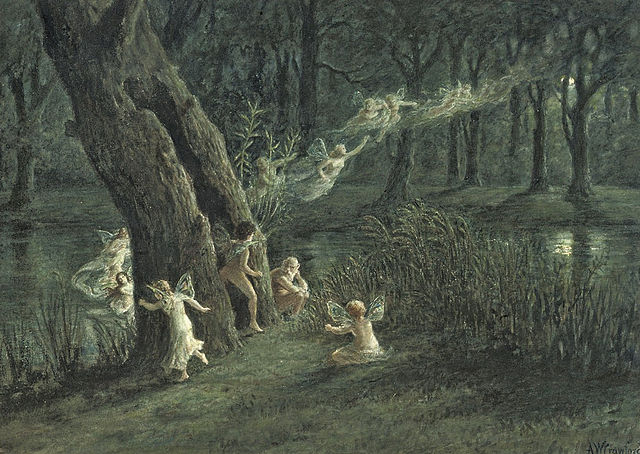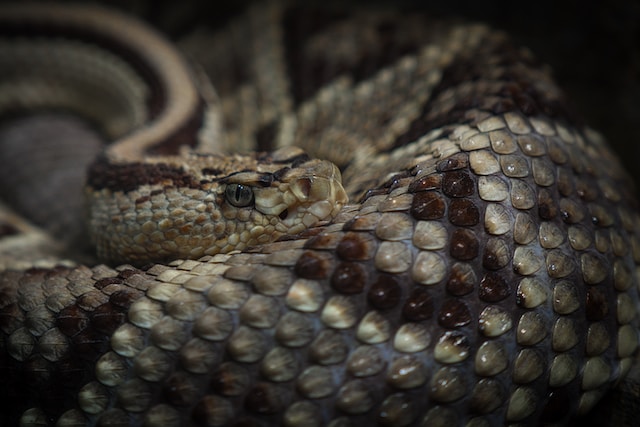The name ‘Exmoor’ conjures mental images of ponies, undulating moorland, and Lorna Doone, R D Blackmore’s 1869 novel.
It crosses the Somerset and Devon border, hugging the north Devon coast, and takes its name from the River Exe.
Like Kielder in Northumberland, Exmoor is an International Dark Sky Reserve, making it a perfect place to observe the wonders of the night sky. A wild and beautiful place, designated a national park in 1954, Exmoor is home to a whole range of folklore.
Witches, ghosts, pixies, superstitions, and the famous Beast of Exmoor – the park features them all. Let’s investigate some of these tales further…
Witches
Most places in Europe have some tales of witches, and Exmoor is no exception. Yet witches don’t always fall foul of those who might persecute them.
The Poult Inn once stood at Heathpoult Cross. Fanny Pope lived there with her grandson. He always managed to find a good hare for the hunters to chase, although one day, they heard him shout, “Run, Granny, run, or they will catch you!” Interesting choice of words!
Later, the hunters arrived at the inn and spotted Fanny looking rather bedraggled and out of breath. The hunters wondered if she was the hare. The story goes no further, but we can only assume the hunters never managed to catch her to confirm their suspicions (Exmoor Wildlife Safaris 2019).

A holly tree near Oare Manor became linked with witchcraft when locals associated the tree with a witch, Molly. No one ventured past the tree and the nearby gate after dark in case they encountered Molly. Apparently, she was only 6″ tall and would stand on the gate. On other occasions, she took the form of a white hare and stood in the lane (Exmoor Wildlife Safaris 2019).
Close Encounters with Witches
Surprisingly, witches could apparently still be readily found on Exmoor even in the 1850s (Snell 1903: 213). Yet it’s more likely that the tales of witches are older than that. In one story, a farmer believed the decline of his cattle to be due to a witch’s influence. He set off for the nearest white witch, who lived thirty miles away. The white witch listened to the farmer and concluded that yes, witchcraft was to blame. In fact, the witch responsible lived in a shack near his homestead.
The farmer left the home of the white witch and stormed off to the shack, accompanied by a group of his neighbours. When they got there, they found the old woman feverish on her death bed. They considered this to be the work of the white witch, and when the old woman finally died, they demolished the shack.

Frederick John Snell gave the advice that it was best to defer to witches, and help them in any way you could (1903: 217). He notes the danger in both receiving from and refusing gifts to witches. Snell relates a tale in which an old woman stopped at a farm to ask for a drink of cider. The family had none to spare following a dismal apple harvest, and the woman hobbled away, muttering curses under her breath.
Soon after, the farmer was hit by financial misfortune, and each of his daughters died (1903: 218). Is it likely the old woman cursed the farmer? No. But coincidence was often used to justify a sudden change in luck, as if being persecuted for refusing a request is somehow preferable to simply being the victim of bad luck.
Snell even explains that so many farms and houses on Exmoor had ovals moulded on the ceiling since anything “beneath these figures is considered sacred” (1903: 219). It certainly makes a change from the usual apotropaic marks used to ward off witches.
The Devil on Exmoor
We can’t talk about witches without talking about the Devil. Though one strand of folklore that is particularly rich is that of ‘the Devil in the landscape’. In these stories, the Devil takes an action that results in a change to the landscape. He often throws rocks in a fit of temper that become notable rock formations.
According to legend, the Devil decided to build a bridge over the River Barle. He did so in a single night, resulting in the Tarr Steps that you can still visit today. The Devil being the Devil, he then refused to let anyone safely cross the bridge. Worse, he would destroy the first creature that crossed it. A parson sent a cat across the bridge, which the Devil dutifully tore to pieces. Yet it seems the Devil’s spell only lasted for one creature, and the cat’s death broke his curse. People could safely use the bridge (Snell 1903: 263). This sort of story appears in many places, including Venice’s Rialto Bridge.

The construction of the Steps also explained the existence of Dunkery Beacon, the summit of Dunkery Hill, the site of several Bronze Age burial mounds. The Beacon marks the highest point on Exmoor, at 520 m above sea level. In the story, the Devil was carrying rocks in his apron to build the last section of the Steps when the strap broke. The rocks fell to the ground, and became Mounsey Castle.
Tired from building the Tarr Steps, he took a break on Winsford Hill. Finding himself thirsty, he tore a chunk of the hill away to reach the water beneath. He threw the rock over his shoulder, and it became the Dunkery Beacon. The hole on Winsford Hill is the Punchbowl (Gladstone 2014).
If that wasn’t enough, the Devil is also allegedly responsible for the Whit Stones. He and a giant had a throwing competition, resulting in the stones’ location, though no one knows who won the contest (Gladstone 2014).
Ghosts
According to Paranormal Database, there are a few ghosts on Exmoor. In the Chetsford Water area, people hear thudding hooves or neighing horses though there are no horses nearby (2023).
Lightning shattered a large standing stone in 1996 near Mattocks Down Barrow. According to legend, the ghosts of those soldiers killed on the ancient battlefield nearby gather at the stone (2023).
Meanwhile, in the Doone Valley, there was a 19th-century sighting of a werewolf. A woman described seeing a grey man stalking a large rabbit after dark. That would be odd enough, but the man having the head of a wolf made it even weirder. A stag ran out from a nearby thicket and the werewolf vanished (2023).
Bear in mind that a man with a dog’s head is more likely a cynocephali, or dog-headed man. But still, keep that werewolf thing in the back of your mind…

Laying Ghosts
Clergymen on Exmoor were noted for their ability to ‘lay ghosts’. Whenever a ghost troubled locals, their pastor was their first port of call. Yet Snell notes an occasion in which the parson himself was the problem.
The nameless parson died, and the mourners buried him following all the usual rituals. Yet when they returned to his house following the burial, they found his ghost sitting in his armchair. He returned every night, and no amount of praying or even reasoning with him did any good. Eventually, they called in another parson whose reputation for ghost laying preceded him. When this parson arrived, the ghost got up out of his armchair and followed the ghostbuster out of the house. The locals watched the pair cross the meadows opposite the house. When they reached an apparently bottomless pool, there was a flash of lightning, and the ghost disappeared, never to be seen again (1903: 227).
Ghost laying often involved praying at a ghost and conjuring it into an object, often a bottle. This item was then deposited in water; the deeper the better. It’s likely the pastor conjured the ghost pastor into an item and then threw it into the pool.
Exmoor Pixies and Fairies
You would expect somewhere like Exmoor to be knee-deep in stories of fairies, but one thing that stands out is the difference drawn between pixies and fairies. Snell references Mrs Bray’s Traditions of Devonshire, in which Mrs Bray explains this difference. As she says, pixies are actually “the souls of infants, who were so unhappy as to die before receiving the Christian rite of baptism” (Snell 1903: 249).
Apparently, they prefer solitary places, hills, woods, or streams. They love dancing, especially in circles or rings. Surprisingly, they don’t always dance to music, being equally capable of finding melody and rhythm in nature’s sounds, such as crickets, frogs, or birds. Pixies also possess shapeshifting powers, although they always wear green (Snell 1903: 249).

This is particularly noteworthy since the fairies of Exmoor were apparently partridge-sized and reddish brown all over. If anyone did see them, it was in the blink of an eye (Briggs 1961: 518).
It’s not all fun and games, as pixies also stole young children, led travellers astray, or simply played practical jokes. Some villagers spoke of helpful pixies who aided them in their chores, especially if they were elderly (Snell 1903: 250). As with brownies, presenting a gift of clothes was the quickest way to ensure the pixie left your home.
Pixies apparently didn’t go near churches and preferred to congregate in those wild, desolate spaces largely avoided by humans.
Snell suggests smugglers may have encouraged stories of pixies on Exmoor to conceal their activities (1903: 253). Again, such stories appear all over the country, but especially along the coast, where smugglers used tales of fairies to deter people from getting too close to their hiding spots in caves.
Superstitions, Omens, and Divination
While some locations feature the same folkloric practices, other practices become region-specific. One Exmoor superstition involved dreams; specifically, men should avoid sleeping on Exmoor, because dreaming of eggs, copper money, or a clergyman meant misfortune was on the way (1895: 311).
And if a girl dreamed of a viper, it meant she had a secret enemy working to harm her (Snell 1903: 221).

It was also considered extremely bad luck to see your double. A man from Dulverton riding towards the station died after his horse threw him. A neighbour expressed her complete lack of surprise upon hearing the news, adding that he’d seen himself a week earlier. If you did see yourself, you had to allow a considerable period of time to go by before you used the same route where the double had been seen (Snell 1903: 223).
And in one village, locals noticed that whenever the parson finished his sermon at 4 pm, something awful happened to a villager within the week. Eventually, they spoke to the parson and he made sure his sermon either ran beyond 4 pm, or stopped well short of it (Snell 1903: 223).
Finally, it wouldn’t be a Fabulous Folklore post without a love divination, would it? This one falls into that notable class of ‘finding out the initials of your intended’. A single woman would put a basin of water under her bed on Midsummer Eve. She’d float the letters of the alphabet face down on the water. The following morning, she’d check the water, and if two or three of the letters turned over, they would provide the initials of her future husband (Snell 1903: 239).
If she wanted to know when she would marry, then she’d make a pendulum by tying a wedding ring to one of her hairs. On Midsummer Day at noon, she hung the ring in a glass of water. She needed to count how many times the ring struck the glass by the final stroke of twelve. The number told her how many years she had to wait before she’d marry (Snell 1903: 239).
The Beast of Exmoor
I’ve left probably the most well-known legend to last. Now, we’ve talked about alien big cats on the blog before, particularly around the Beast of Bodmin. Exmoor has its own creature, and tales of the Beast of Exmoor date to 1983. 80 sheep were killed in a period of ninety days in north Devon. Farmer Eric Ley lost £2,000 of livestock in two months to the Beast (Western Daily Press 1983: 9). He first blamed foxes in 1982, but when he’d lost 30 lambs by April 1983, thoughts turned to larger predators (Francis 1993: 11).
An early sighting described a “large, black and catlike” animal, “with white feet and a long sweeping tail” (Francis 1993: 12). A local bus driver placed the animal’s height at around 2ft 6ins to the shoulder after seeing it in a lane (Francis 1993: 12). Someone else described an animal that was 4-5ft long, with “a colt-like face” and eyes that didn’t reflect lamplight (Francis 1993: 12). Despite regular patrols by farmers, the animal kept killing, even in areas under surveillance.
In June 1983, two schoolboys claimed to have encountered the Beast while on holiday on a farm. They said it had a head like an Alsatian, with green eyes, standing at 4-5 ft tall (Coventry Evening Telegraph 1983: 24).

At the time, Royal Marines combed the area, and one of them even reported seeing “a large, powerfully-built, black catlike animal” (Francis 1993: 28). The Daily Express also offered a £1,000 reward for anyone who could shoot the Beast, and after an outcry about amateur hunters roaming Exmoor, changed the challenge to £1,000 for the first photograph (Francis 1993: 30). The stunt prompted the Royal Marines to withdraw before the hunt was finished.
Naturally, other theories were put forward. One person said the Beast was a pig, another blamed aliens, and yet another said it was a local werewolf (Francis 1993: 53).
In 1985, park wardens reported seeing two black cat-like animals, sparking fears the Beast of Exmoor had started a family (Sunday Mirror 1985: 7).
In 1988, a biologist decided to try a different tactic to capture the Beast. Nigel Brierley intended to take a potion extracted from catmint with him onto the moor (Sandwell Evening Mail 1988: 2). Unfortunately, I couldn’t find a follow-up to see what happened.
When more sheep were killed and eaten in October 1990, the police called in a naturalist to determine if the Beast was back (Belfast News-Letter 1990: 4). Again, I couldn’t find a follow-up, but the stories seem to peter out. Either the media got bored, or locals got used to seeing the Beast.
There were apparently sightings as recently as 2010, though I can’t find any newspaper reports of them (Gladstone 2014). Is the Beast of Exmoor still out there? Is there more than one of whatever it is? Unless anyone captures a genuine photo, or the animal turns up dead somewhere, I don’t think we’ll ever know. It’s also unlikely that a Beast seen in 2010 is the same one as 1983. Panthers can live up to twenty years in the wild, which seems to be the closest candidate for the Beast. Yet this one would need to be almost thirty, making it more difficult to believe.
What do we make of Exmoor?
Much of the folklore is similar to other places, such as the tales of the Devil and his landscaping exploits. We have to wonder if these stories were commonplace and people simply added local variations, or if they somehow spontaneously emerged in different places, and gained similarities when people wrote them down. Yet these stories still hold value, tying the tales to specific locations, and thus rooting the lore in the land itself.
The stories of pixies are a good example. While some of their behaviour dovetails with that of the brownie, or even the Will-o’-the-wisp, describing them as the souls of unbaptised infants makes them different from their fairy cousins. The fact that Snell’s book wholly discusses pixies and barely mentions fairies is worth noting.
We might never know if any of these stories are true, but in some ways, it doesn’t really matter. The stories are a way to connect with the land, and to understand those that came before.
Which is your favourite Exmoor legend?
References
Belfast News-Letter (1990), ‘Exmoor beast strikes again’, Belfast News-Letter, 17 October, p. 4.
Briggs, K. M. (1961), ‘Some Late Accounts of the Fairies’, Folklore, 72:3, pp. 509-519.
Coventry Evening Telegraph (1983), ‘Exmoor Beast – how big a threat?’, Coventry Evening Telegraph, 3 June, p. 24.
Exmoor Wildlife Safaris (2019), ‘Exmoor Legends’, Exmoor Wildlife Safaris, https://exmoorwildlifesafaris.co.uk/exmoor-info/exmoor-legends.
Francis, Di (1993), The Beast of Exmoor: And Other Mystery Predators of Britain, London: Jonathan Cape.
Gladstone, Chris (2014), ‘The 12 Tales of Exmoor’, Great British Life, https://www.greatbritishlife.co.uk/news/22620905.12-tales-exmoor/.
Page, John Lloyd Warden (1895), An Exploration of Exmoor and the Hill Country of West Somerset: With Notes on Its Archaeology, London: Seeley & Co.
Paranormal Database (2023), ‘Devon Ghosts, Folklore and Forteana’, Paranormal Database, https://www.paranormaldatabase.com/devon/devodata.php.
Sandwell Evening Mail (1988), ‘Sex lure for Exmoor Beast’, Sandwell Evening Mail, 13 February, p. 2.
Snell, Frederick John (1903), A Book of Exmoor, London: Methuen & Co.
Sunday Mirror (1985), ‘Exmoor Beast No. 2’, Sunday Mirror, 1 December, p. 7.
Nutty about folklore and want more?
Add your email below and get these posts in your inbox every week.
You'll also get my 5-step guide to protecting your home using folklore!







Have your say!